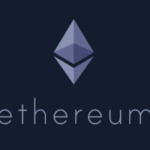Solana vs Ethereum: Analyzing Key Metrics and Discounts from 2023 to 2024

Solana (SOL) has made some big moves in the last couple of years, closing the gap between its market capitalization and that of Ethereum’s ether (ETH). Back in January 2023, SOL was trading at a whopping 97% discount to ETH, but today that discount has narrowed to 70%.
But here’s where it gets interesting—Solana is giving Ethereum a run for its money in terms of on-chain activity and network usage. So, the big question on everyone’s mind is whether the market is still out of whack.
Let’s break it down with some key data points:
1. **Network Fees**: In the second quarter, Solana raked in $151 million in fees, which is 27% of what Ethereum and its top layer 2s did. Fast forward to the last 90 days, and Solana’s share has jumped to 49%.
2. **DEX Volumes**: Solana crushed it with $108 billion in decentralized exchange trading volume in Q2, making up 36% of Ethereum and its top L2s. Over the last 90 days, that number has soared to $153 billion and 57%, respectively.
3. **Stablecoin Volumes**: SOL did $4.7 trillion in stablecoin trading volume in Q2, which is nearly twice that of Ether and its top L2s. However, in the last 90 days, that number dropped to $963 billion, accounting for 30% of Ethereum and its top L2s. It seems like bots and algorithmic trading might have inflated the Q2 numbers, as only 6% of Solana’s stablecoin volume comes from peer-to-peer transfers, compared to 30% on Ethereum.
4. **Total Value Locked (TVL)**: Solana closed out Q2 with $4.2 billion TVL, representing 6.3% of Ethereum and its top L2s. Currently, SOL’s TVL stands at $8.2 billion, making up 12% of Ethereum and its top L2s.
Looking at the 90-day performance, here’s how Solana stacks up:
– 49% of Ethereum’s fees
– 57% of Ethereum’s DEX volumes
– 30% of Ethereum’s stablecoin volumes
– 4.1% of Ethereum’s stablecoin supply
– 12% of Ethereum’s TVL
Based on this on-chain data, it seems like SOL’s valuation compared to ETH is getting more in line. However, investors should also consider qualitative differences between the two networks and keep an eye out for any upcoming catalysts that could shake things up as we head into 2025.





